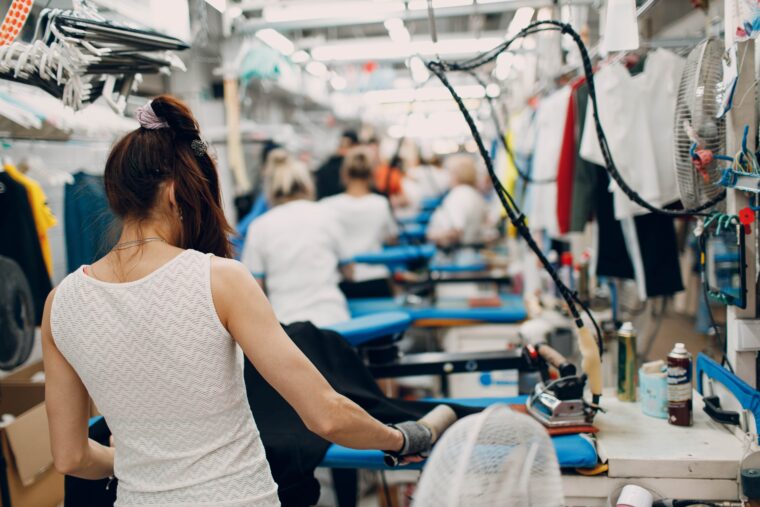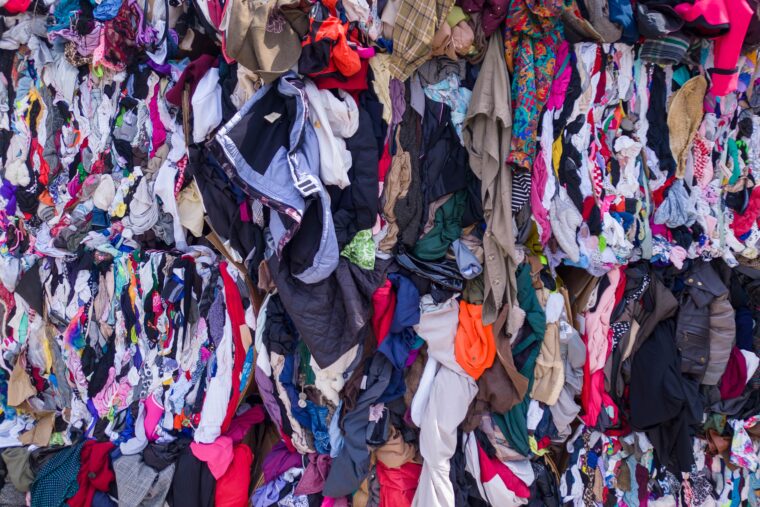The importance of a well-managed fashion supply chain
The global fashion industry, and by extension, its supply chain, is unsurprisingly massive. In 2021, the fashion industry’s global revenue was estimated between $1.7 trillion and $2.5 trillion according to two different research reports by Euromonitor and McKinsey. It employs millions, utilises every form of transport known to man, and besides the expected dip during the Covid-19 pandemic, grows year after year. China is the world’s largest exporter of clothing and textiles by far with 43.5% market share, and the European Union is the largest importer with 24.3%.
What this all means is that there is no sign of the fashion industry slowing down, and at the heart of this giant machine is the supply chain. One seemingly tiny setback and the whole cart is upset (remember how just one ship blocking the Suez Canal made global headlines for weeks?). It sounds obvious, but a well-managed fashion supply chain is so much more important than just getting your shoes delivered on time. It affects livelihoods, businesses, governments, and the very sustainability of our one and only planet. To give an idea, according to a February 2022 survey, 89 percent of senior fashion executives agreed that the rising cost of raw materials would impact the supply chain beyond 2022.
Supply chain issues that impact the fashion industry
Changing consumer demand
The last few years have seen a change in consumer mindset and behaviour towards more conscious consumerism and ethical fashion – and rightfully so. As we learn more about sustainability, the use of raw materials, labour practices, and the planet’s future, consumers are more aware than ever before of how their purchasing habits influence the market. People want to know where their fashion comes from and how it impacts both the environment and the people involved in the supply chain. It has led to fashion companies being more transparent in their practices, which has led to a change in suppliers, procurement, and policies for many brands.
The Covid-19 pandemic and resulting lockdowns also made many consumers change their buying habits. A bigger emphasis was placed on both e-commerce and also buying from sustainable online sources, while spending on luxury goods declined somewhat during this time. E-commerce was already on the rise, but the lockdowns also meant more people buying online and putting much more pressure on those specific supply chains and the type of goods bought. Brands and suppliers had to manage inventory and adjust production schedules to avoid excess stock or shortages.

Challenges in Sourcing Sustainable and Ethical Raw Materials
With the change in attitude to sustainable and ethical use in raw materials, came a challenge for fashion brands. Being sustainable frequently means more expensive and harder to procure materials. Brands had to build new and strong relationships with suppliers as well as invest more into research and development. In conjunction with this, the move away from fossil fuels means the adoption of renewable energy usage, which is becoming easier and cheaper each year.
The last few years have also seen fluctuations in material prices and availability worldwide. Factors such as climate change, geopolitical tensions, and economic instability have impacted the supply of raw materials, making it crucial for brands to have backup plans.
With increased globalisation, global fashion supply chains are more interconnected than ever before. New and old geopolitical tensions and climate change have forced a rethinking in diversifying supplier bases and staying informed of international trade developments.
McKinsey and Company’s 2023 report on the fashion industry explains it as follows; “The war in Ukraine forced the re-routing of trade and triggered an energy crisis, while ageing port systems across the globe are creating transport bottlenecks. Global inflation has pushed up input costs — cotton and cashmere prices have increased 45% and 30% year on year in 2021 respectively — and extreme weather is hitting developing economies like Pakistan where, alongside the tragic loss of human life, as much as 45% of the country’s cotton crops were wiped out by floods in August 2022.”

Sustainability Practices and ESG
To put into perspective not only fashion’s influence on the environment but also the ESG policies (Environmental, Societal, and Governance) on fashion, let’s look at some numbers. According to recent UN reports, fashion production makes up 10% of humanity’s carbon emissions. What’s more, 85% of all textiles go to the dump each year. It uses some 93 billion cubic metres of water annually, and causes 20% of industrial wastewater pollution worldwide. The production of one cotton shirt requires 2700 litres – the amount one person drinks in 2.5 years. In addition to this, there is the human cost, where so many workers are paid unfair wages and work in harsh conditions. Now these figures aren’t meant to just instil fear, but to illustrate how widespread and needed sustainable practices are. Thankfully, fashion brands are painfully aware of this, and improvements are being made each year, but each step affects the fashion industry supply chain.
With this move to a circular economy – reusing and recycling more – manufacturing and sourcing of materials has also changed. Fashion brands like Patagonia are trying to make clothes from more recycled materials and encourage the second-hand market.
Other companies like Stella McCartney, a luxury fashion brand, actively avoid using animal-derived materials and work with sustainable suppliers to promote recycling initiatives like Parley for the Oceans. Other brands are also committed to sustainable practices, using eco-friendly fabrics like TENCEL™ lyocell and repurposed vintage garments, some use plastic bottles for their shoes, and or commit to planting 10 trees for each item sold. Change is happening, and it really does affect everyone from the designer to the wearer.
Transportation and Logistics
Transport and logistics are some of the most notable and direct impacts on the fashion industry. Whether it’s strikes like the Canadian Truckers in 2022 or natural disasters like recent flash floods around the globe, they are some of the hardest to predict and plan for. They can disrupt the most basic of infrastructures like transporting raw materials from farms to factories or global delivery systems. Brands have to employ multiple shipping routes or invest in local warehousing to mitigate these disruptions.
Last-mile delivery, the final step of the delivery process, is also particularly challenging in the fashion industry. Many customers expect efficient last-mile delivery, same-day delivery and quick turnaround on returns. Fashion brands are required to invest in advanced analytics, artificial intelligence, and inventory management to keep up with demand, often in real-time.
To have resilient and agile supply chains means diverse suppliers, new technology, and flexible logistics networks. The need to foster strong relationships with suppliers, have contingency plans, and prepare for an uncertain future is stronger than ever.

International Trade
One cannot ignore the effect of trade agreements and tariffs on the fashion industry supply chain. When trade agreements are favourable, they reduce costs and can open new markets, but rising tariffs complicate the process. Staying on top of international trade policies is another hat the fashion industry is always wearing interchangeably.
Then there are customs regulations and compliance requirements. It’s another aspect that can differ quite significantly between countries and is again, complicated by changing international relations, events, and technologies. When there is non-compliance, whether through ignorance or circumventing, it results in delays, fines, and even freezing of shipments.
This means that brands need to diversify their sourcing. While it mitigates against the risks mentioned above, it can also mean more expenses, but it reduces dependency on any single region or country. Many times, fashion brands will not have much choice, depending on their product and customer-base, and often rely on the very niche aspect of their business to keep afloat. Another aspect of this is called nearshoring and reshoring. It means either moving production closer to the consumer market, or bringing production back to the brand’s home country, respectively. This can mean higher labour costs and new facilities, but can allow for reduced transport costs and more control over production quality and logistics. It’s a constant weighing-up that needs to happen to determine the best approach for a certain brand.
Like any process that involves humans, the fashion industry’s supply chain is complex, evolving and multi-faceted. It is responsible for so many aspects of our daily lives, and touches so many other industries. In an increasingly globalised world, the supply chain will only continue to be influenced and also in turn influence others. Whether it’s a global fashion brand or your local retro thrift store, they are all part of the same web, trying to fulfil the same needs.
As the industry changes, it’s tough to keep up with it all, so if you have a fashion business and want to stay on top of things in one place, we’ve got you covered. For 18 years of knowledge and experience, let Zedonk’s specialist ERP solutions be your guide.


